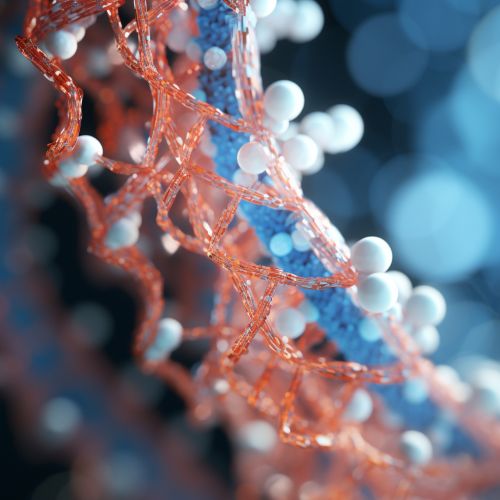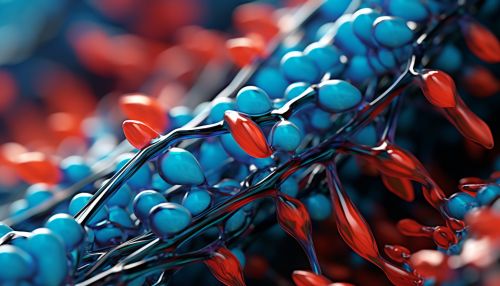Histone Deacetylase
Introduction
Histone deacetylase (HDAC) is an enzyme that plays a critical role in the regulation of gene expression. This enzyme is part of a larger family of proteins, known as histone deacetylases, which are involved in the removal of acetyl groups from the lysine residues on histone proteins. This process, known as deacetylation, results in the condensation of the chromatin structure and repression of gene transcription.


Structure and Classification
Histone deacetylases are classified into four classes based on their homology to yeast proteins. Class I, II, and IV are considered "classical" HDACs and are zinc-dependent enzymes. Class III, also known as sirtuins, are NAD+-dependent enzymes. Each class has distinct structural features and substrate specificities.
Class I
Class I HDACs include HDAC1, HDAC2, HDAC3, and HDAC8. These enzymes are primarily located in the nucleus and play a role in cell proliferation and survival. They share a common structure with a catalytic domain and a C-terminal extension.
Class II
Class II HDACs are further divided into Class IIa (HDAC4, HDAC5, HDAC7, and HDAC9) and Class IIb (HDAC6 and HDAC10). These enzymes are found in both the nucleus and the cytoplasm and are involved in a variety of cellular processes, including muscle development and immune response.
Class III
Class III HDACs, or sirtuins, include SIRT1-SIRT7. Unlike the other classes, these enzymes require NAD+ for their deacetylase activity. They are involved in a variety of cellular processes, including aging, inflammation, and stress response.
Class IV
Class IV only contains one member, HDAC11, which shares features with both Class I and II HDACs. Its role in cellular processes is still being explored.
Function
Histone deacetylases play a critical role in the regulation of gene expression. By removing acetyl groups from histone proteins, they condense the chromatin structure, making it less accessible for transcription machinery and thereby repressing gene transcription. This process is counterbalanced by the activity of histone acetyltransferases (HATs), which add acetyl groups to histones and promote gene expression.
In addition to their role in gene regulation, histone deacetylases are also involved in other cellular processes. For example, they play a role in cell cycle progression, apoptosis, and DNA repair. They also interact with other proteins, such as transcription factors and co-repressors, to modulate their activity.
Role in Disease
Abnormal histone deacetylase activity has been implicated in a variety of diseases, including cancer, neurodegenerative disorders, and cardiovascular diseases. In cancer, overexpression or mutation of HDACs can lead to aberrant gene expression and promote tumor growth and survival. Similarly, in neurodegenerative disorders, dysregulation of HDAC activity can lead to neuronal death and cognitive decline. In cardiovascular diseases, HDACs have been implicated in cardiac hypertrophy and heart failure.
Therapeutic Potential
Given their role in disease, histone deacetylases have emerged as potential therapeutic targets. Several HDAC inhibitors, such as vorinostat and romidepsin, have been approved for the treatment of certain types of cancer. These drugs work by blocking the deacetylase activity of HDACs, leading to increased histone acetylation and gene expression.
In addition to cancer, HDAC inhibitors are also being explored for the treatment of other diseases. For example, they are being investigated for their potential to protect against neurodegeneration and to treat heart failure. However, these applications are still in the early stages of research and development.
